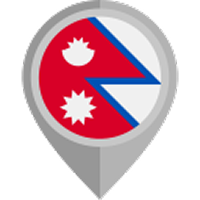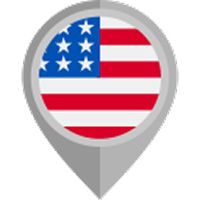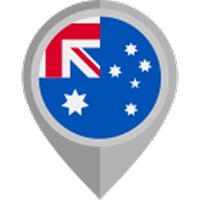Nepal vision | 27/07/2023
You want to conquer the breathtaking landscapes of Nepal with confidence. Before that, you must start with a packing checklist for a trek in Nepal.
Nepal is located between the Himalayas, which offers different trekking opportunities, both challenging and majestic.
Whether you're planning to visit the Annapurna Circuit, trek to
, or embark on the lesser-known trails that weave through lush forests and remote villages, one thing is sure â preparation is the key to a successful journey.
But how to prepare for the packing checklist for a trek in Nepal?
What should we pack for trekking in Nepal?
Nepal has towering peaks, beautiful valleys, and ancient cultures. At the same time, adventurers from around the globe explore its untamed beauty through epic trekking experiences.
Proper packing becomes the cornerstone of a successful and memorable journey as you prepare to immerse yourself in Nepal's rich culture, stunning vistas, and rugged terrains.
Let's tick the packing checklist for a trek in Nepal thoughtfully crafted to equip you with all the necessities to embrace the challenges and wonders of the Himalayas.
Trekking Gear
Trekking gear forms your expedition's backbone, ensuring you are well-equipped to tackle Nepal's trekking routes. From comfortable footwear to essential clothing layers, here's a closer look at the vital items you'll need:
Backpack
A reliable and comfortable backpack is good for carrying all your gear throughout the trek. Choose one with sufficient capacity to accommodate your necessities without being too cumbersome.
Trekking Poles
These invaluable tools provide stability, reduce strain on your joints, and offer better balance, especially while traversing steep ascents and descents.
Sleeping Bag
You should invest in a good-quality sleeping bag suitable for the prevailing weather conditions during your trek. At the same time, ensure it provides adequate warmth and comfort for a peaceful sleep.
Sleeping Pad
A lightweight and insulated sleeping pad adds an extra layer of comfort, providing insulation from the cold ground and enhancing your sleeping experience.
Trekking Shoes/Boots
Sturdy, well-fitted, and waterproof footwears are essential to endure long hours of walking on uneven terrain. Break them in before the trek to avoid discomfort.
Lightweight Clothing
Choose moisture-wicking, breathable fabrics for your trekking clothes. Layering is crucial in adapting to varying temperatures, and lightweight clothing ensures ease of movement.
Insulating Layers
Pack a fleece or down jacket to stay warm during chilly evenings and higher altitudes where temperatures drop significantly.
Waterproof and Windproof Jacket and Pants
Nepal's weather can be unpredictable, so be prepared with waterproof and windproof outer layers to shield you from rain and wind.
Sun Hat and Sunglasses
Protect yourself from the sun's harsh rays with a wide-brimmed hat and high-quality sunglasses with UV protection.
Gloves
Lightweight gloves for regular trekking and insulated gloves for colder regions help protect your hands from the elements.
Having the right trekking gear ensures comfort and safety during your journey. It allows you to focus on the breathtaking scenery and incredible experiences that await you in Nepal's stunning landscapes.

Personal Items
Passport and Permits
Your passport is a must for international travel to Nepal. Additionally, you'll need various permits depending on the trekking region, such as the TIMS card (Trekkers' Information Management System) and the Annapurna Conservation Area Permit (ACAP).
Make sure to obtain these permits before starting your trek.
Travel Insurance
Securing comprehensive travel insurance is vital for trekking in Nepal. It should cover emergency medical evacuation, trip cancellations, and unforeseen incidents that may occur during your journey.
Cash and Credit Cards
While some significant towns along the trekking routes have ATMs, it's essential to carry enough Nepalese rupees in cash for places where banking facilities might be limited. Also, take a credit card as a backup payment option.
Personal Identification
In addition to your passport, carry a copy of your passport and other identification documents. Having digital copies stored securely online or in your email is helpful.
Prescription Medications
If you're on any prescription medications, ensure you have an ample supply to last the entire trek. Please keep them in their original containers with clear labels for easy identification.
First Aid Kit
A well-stocked first aid kit is necessary for addressing minor injuries, blisters, and common ailments during the trek. Include adhesive bandages, antiseptic wipes, pain relievers, blister pads, and any medications you might need.
Personal Toiletries
Pack basic personal toiletries, such as a toothbrush, toothpaste, soap, shampoo, and any other items you require for personal hygiene. Opt for travel-sized containers to save space and weight.
As you journey through Nepal's breathtaking landscapes, these personal items will ensure your safety, comfort, and peace of mind.
In contrast, it allows you to focus on natural beauty and cultural wonders awaiting your trek.
Navigation and Communication
Detailed Trekking Map
Carrying a detailed trekking map is a fundamental part of your journey. These maps typically outline the trekking routes, villages, landmarks, and altitudes, helping you stay oriented and plan your daily itinerary.
Compass or GPS Device
While trekking in remote areas, a compass or GPS device becomes an invaluable tool for navigation. They provide essential direction and location information to help you stay on track and aware of the situation.
Mobile Phone and Charger
A fully charged mobile phone with a local SIM card can be a lifeline during your trek. It allows you to communicate with your travel companions and the outside world in case of emergencies.
While network coverage may be limited in some areas, having a phone is crucial for safety.
Emergency Contact List
Prepare a list of important emergency contacts, including local authorities, your embassy or consulate in Nepal, your trekking agency's contact information, and the contact details of your family or friends back home. Keep this list accessible and share it with your trekking companions as well.
Hydration and Nutrition
Water Bottles or Hydration Bladder
Staying hydrated is crucial while trekking in Nepal's diverse landscapes. Carry durable water bottles or a hydration bladder with sufficient capacity to ensure you have access to clean drinking water throughout your journey.
Snacks and Energy Bars
Pack various lightweight and easily portable snacks to keep your energy levels up during long trekking days. High-energy snacks like nuts, dried fruits, and granola bars provide quick nourishment on the go.
Lightweight and High-Energy Food Items
Include lightweight, dehydrated, or instant food options in your pack. These items, like instant noodles or pre-packaged meals, offer a quick and easy way to refuel after a day's trek.
Reusable Food Containers
Opt for reusable and eco-friendly food containers to carry your meals. These containers are convenient for storing food and help reduce waste along the trail.
Trekking Permits
TIMS (Trekkers' Information Management System) Card
The TIMS card is a mandatory trekking permit in Nepal. It helps ensure your safety by maintaining a record of your trekking routes and essential information.
Annapurna Conservation Area Permit (ACAP) or Other Applicable Permits
Depending on your trekking destination, you may need specific conservation area permits. For example, if you are trekking in the Annapurna region, you'll require an ACAP permit.
Miscellaneous
Camera and Spare Batteries
You should capture mesmerising landscapes and unique cultural experiences with a reliable camera. Remember to pack spare batteries and memory cards to ensure you get all those picture-perfect moments.
Portable Power Bank
Keep your electronic devices charged, including your phone and camera, with a portable power bank. It ensures you stay connected and ready to capture memories, even in areas without electricity.
Headlamp or Flashlight
A headlamp or flashlight is required for navigating in low-light conditions, especially during early morning treks or in case of unexpected delays.
Trekking Towel
A compact and quick-drying trekking towel is helpful for personal hygiene and refreshing yourself after a day of trekking.
Garbage Bags (for Waste Disposal)
Preserve the pristine environment of the trekking trails by carrying garbage bags for proper waste disposal. Leave no trace and respect the natural beauty of the Himalayas.
Weather-Specific Items
Rain Cover for Backpack
Protect your belongings from rain showers with a waterproof rain cover for your backpack.
Gaiters (if Trekking in Snow or Wet Conditions)
Gaiters help keep your feet and lower legs dry and protected from snow, water, and debris during wet and snowy treks.
Sunscreen and Lip Balm with SPF
Shield your skin from the intense mountain sun with sunscreen and lip balm containing high SPF.
Insect Repellent
In certain trekking regions, especially during the warmer months, insect repellent is essential to ward off mosquitoes and other biting insects.
Optional Items
Trekking Hat with Neck Protection
It would help if you considered packing a trekking hat with a wide brim for additional sun protection. Some hats also have a neck flap to shield your neck and ears from sunburn.
Trekking Umbrella
An alternative to a rain jacket, a trekking umbrella can be a valuable addition to your gear, providing rain protection while keeping you well-ventilated during light showers.
Portable Camp Chair
If you prefer comfort and relaxation at the end of a long trek, a portable camp chair offers a cosy spot to rest and enjoy the mesmerising views around your campsite.
To wrap up, You should prepare for a trek in Nepal requires careful planning, and the ultimate packing checklist ensures you have everything you need for an unforgettable adventure in the majestic Himalayan landscapes.
Each aspect is crucial for a successful and safe trek, from sturdy trekking gear to essential personal items like permits and medications.
Embrace the challenges and wonders of Nepal's landscapes with Nepal Vision Treks. Additionally, your journey be filled with joy, discovery, and a deep connection with nature. Happy trekking|
FAQS
1) Do I need a guide for trekking in Nepal?
While not mandatory, having a guide is recommended for safety, navigation, and cultural insights.
2) How physically fit do I need to be for trekking in Nepal?
A moderate fitness level is required for most treks; regular exercise and some pre-trek training are beneficial.
3) Can I trek in Nepal without prior trekking experience?
Many treks are suitable for beginners, but choosing a route that matches your fitness level is essential.
4) Are there accommodation facilities along trekking routes in Nepal?
Tea houses and lodges are available in most trekking areas, providing basic accommodation and meals.
5) How safe is drinking water during the trek?
It's safer to drink boiled or filtered water; opt for bottled water or water purification tablets.
6) What type of food is available during treks?
Tea houses and lodges offer a variety of local and international dishes, including dal bhat (rice and lentils), noodles, and soups.
7) What should I pack for a trek in Nepal?
You should pack trekking gear, personal items, hydration and nutrition supplies, permits, miscellaneous essentials, and weather-specific items for a trek in Nepal
8) What kit do I need for trekking?
You need trekking gear, proper clothing, personal items, navigation tools, hydration and nutrition supplies, a first aid kit, and optional items like a camera and camping gear.
9) Will I lose weight trekking in Nepal?
Trekking in Nepal can lead to weight loss due to physical activity and calorie expenditure, but the amount varies depending on factors such as trek duration, intensity, and diet.
Important Resources:
Everest Base Camp Trek -14 Days









